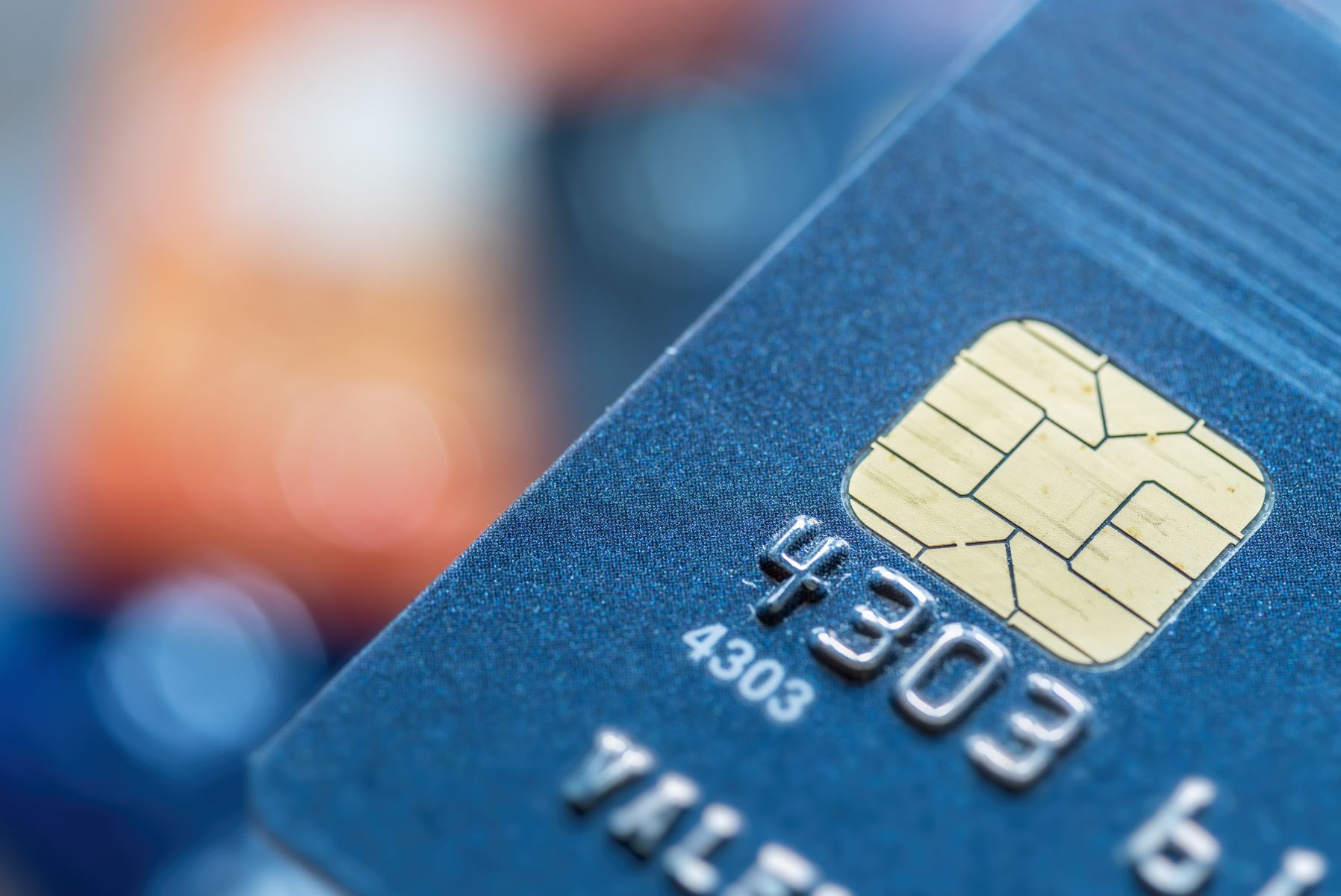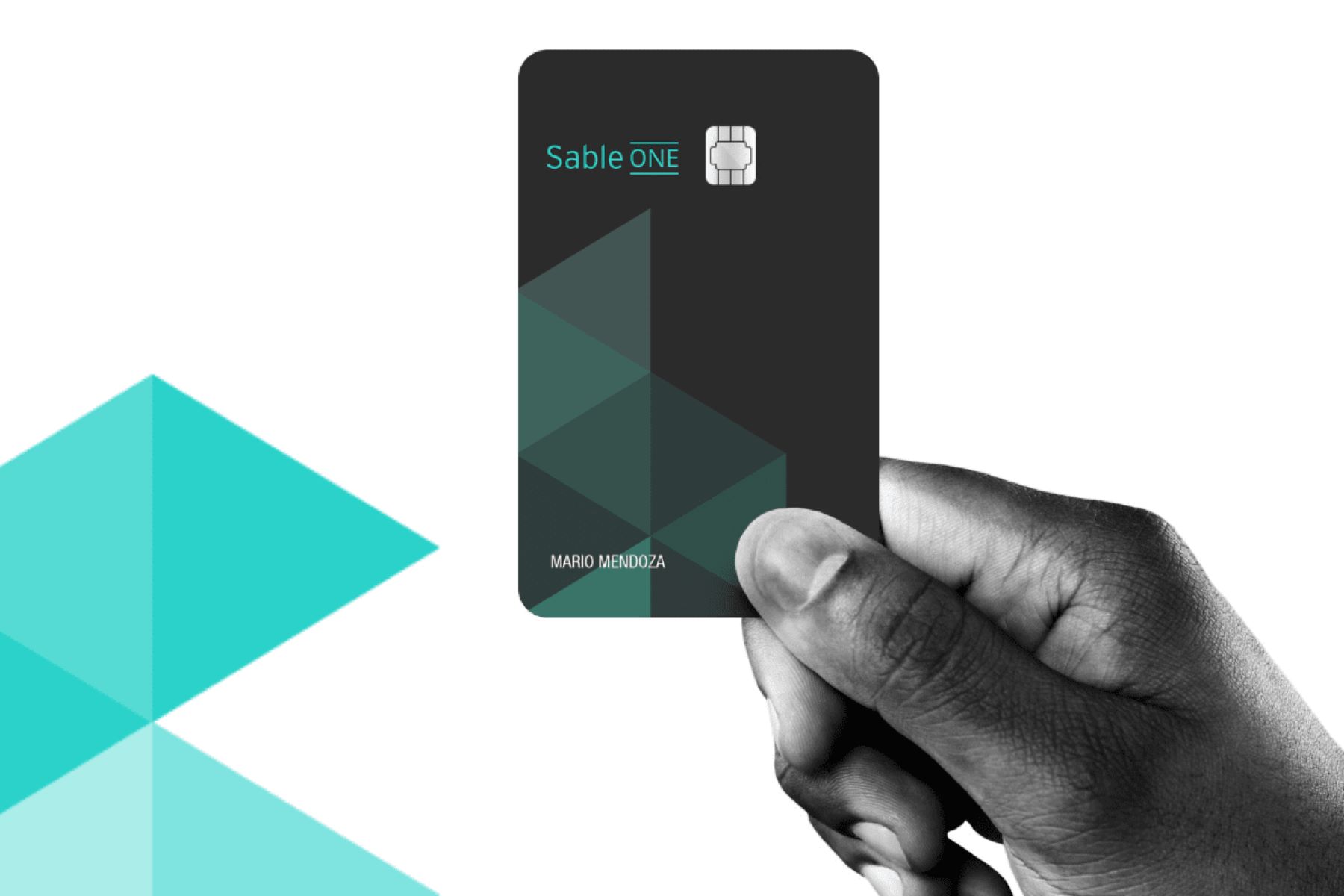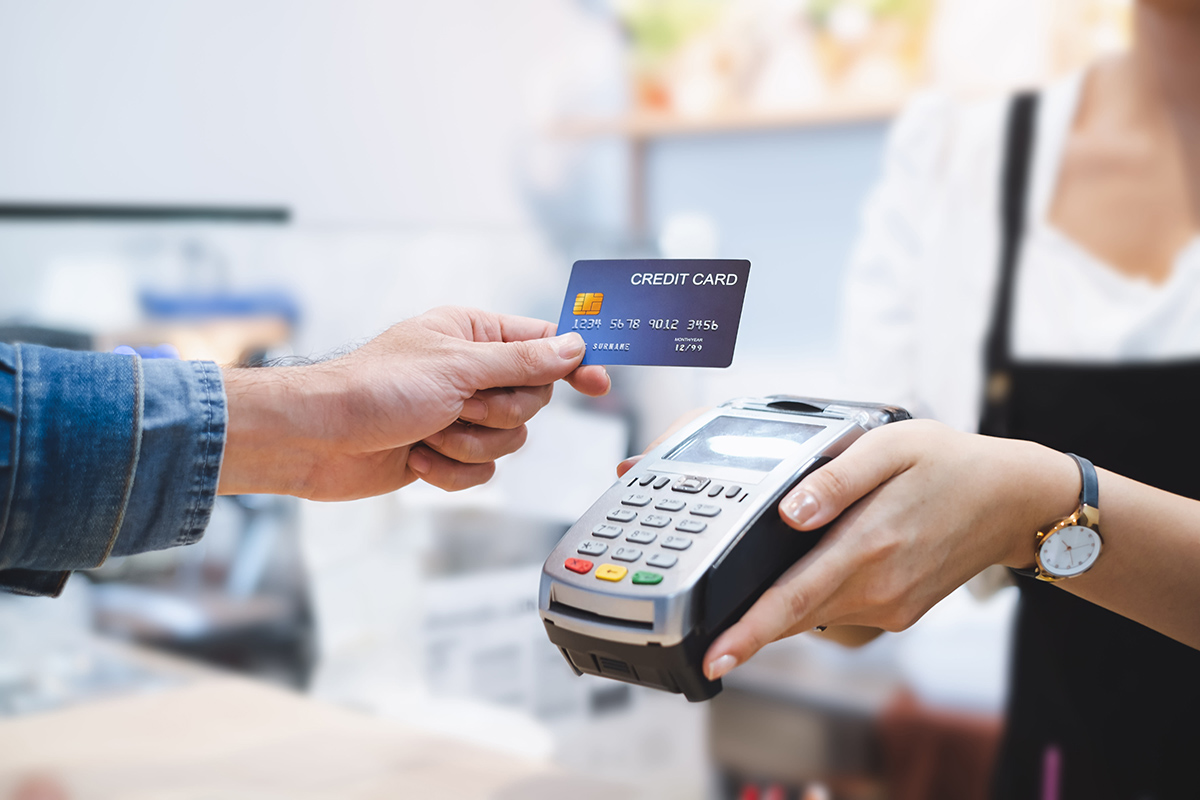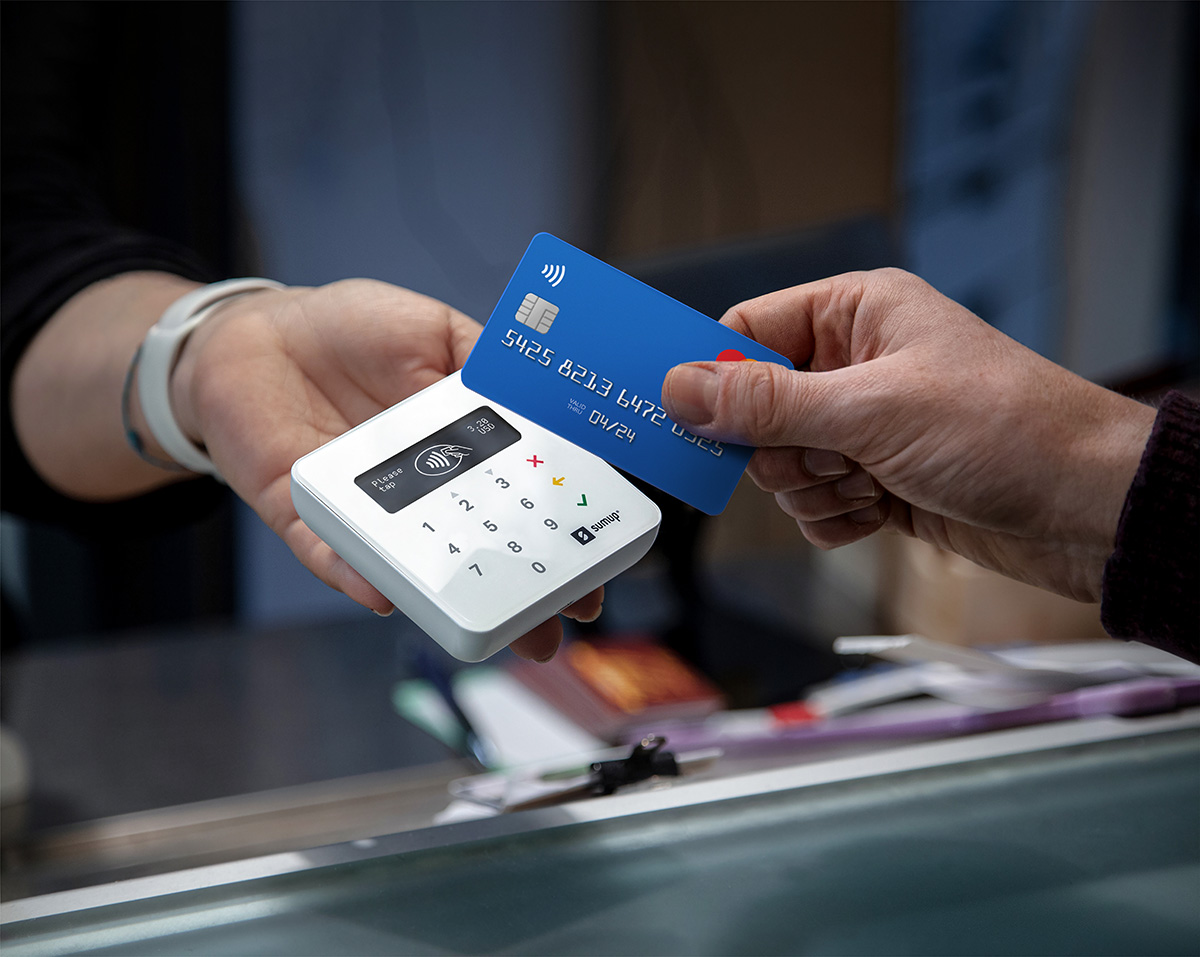

Finance
How Does Credit Card Chip Work
Modified: December 30, 2023
Learn how credit card chips work and the benefits they provide for your financial security. Stay informed about the latest advancements in finance with this informative guide.
(Many of the links in this article redirect to a specific reviewed product. Your purchase of these products through affiliate links helps to generate commission for LiveWell, at no extra cost. Learn more)
Table of Contents
- Introduction
- What is a Credit Card Chip?
- The Purpose of Credit Card Chips
- How Does a Credit Card Chip Work?
- Benefits of Credit Card Chips
- Security Features of Credit Card Chips
- Limitations of Credit Card Chips
- Common Misconceptions about Credit Card Chips
- How to Use a Credit Card Chip
- Future of Credit Card Chips
- Conclusion
Introduction
Credit cards have become an essential part of our financial lives. They provide convenience, flexibility, and purchasing power. Gone are the days of carrying bulky wallets filled with cash and checks. With the advent of technology, credit cards have evolved, and one of the most significant advancements is the introduction of credit card chips.
Also known as EMV chips, these small metallic squares embedded in credit cards have revolutionized the way we make payments. From increased security to faster transactions, credit card chips have transformed the way consumers interact with their cards. In this article, we will take an in-depth look at how credit card chips work, their benefits, security features, limitations, and common misconceptions.
Understanding the functionality and benefits of credit card chips is crucial in today’s digital world, where financial transactions are increasingly vulnerable to fraud and data breaches. So, let’s dive into the world of credit card chips and uncover how they have reshaped the landscape of financial transactions.
What is a Credit Card Chip?
A credit card chip, also known as an EMV chip, is a small metallic square embedded into credit and debit cards. It is part of the EMV (Europay, Mastercard, and Visa) global standard for secure payment transactions. The chip is made of metal and contains a microprocessor and memory to store and process data.
Unlike traditional magnetic stripe cards, which store static information that can be easily copied or cloned, credit card chips generate a unique transaction code for each payment. This dynamic authentication significantly reduces the risk of fraud and enhances the security of transactions.
Initially developed in the 1990s, credit card chips gained significant attention and adoption worldwide in the early 2000s. Today, they have become the standard in many countries, offering enhanced security and protection against counterfeit fraud.
It is important to note that credit card chips are different from contactless payment technologies, such as Near Field Communication (NFC) and RFID (Radio Frequency Identification). While both technologies enable convenient and quick transactions, credit card chips require physical contact with the card reader to complete the payment.
The adoption of credit card chips has been a gradual process, with financial institutions, merchants, and consumers transitioning from traditional magnetic stripe cards to chip-enabled cards over time. This transition has been driven by the need for increased security and compliance with global payment standards.
The Purpose of Credit Card Chips
The primary purpose of credit card chips is to enhance the security of payment transactions. Traditional magnetic stripe cards relied on static data, which made them susceptible to fraud and counterfeit activities. Credit card chips address these vulnerabilities by providing dynamic authentication and encryption.
With credit card chips, each transaction generates a unique code that cannot be reused, making it nearly impossible for hackers to clone or replicate the card information. This dynamic authentication adds an extra layer of protection, reducing the risk of unauthorized use of the card.
Another purpose of credit card chips is to facilitate global interoperability. In the past, travelers often faced difficulties using magnetic stripe cards in countries where chip-enabled terminals were prevalent. With the adoption of credit card chips, users can now make payments seamlessly across different regions without worrying about compatibility issues.
Credit card chips also enable faster and more efficient transactions. When the chip is inserted into a chip-enabled card reader, the authentication process takes place within seconds, providing a smooth and hassle-free payment experience for both consumers and merchants.
Furthermore, credit card chips play a vital role in combating counterfeit fraud. The unique transaction codes generated by the chip make it exceedingly challenging for criminals to clone or create fake cards. This has resulted in a significant reduction in counterfeit fraud rates in regions where credit card chips are prevalent.
Overall, the purpose of credit card chips is to enhance security, ensure global interoperability, enable faster transactions, and combat counterfeit fraud. These chips have revolutionized the payment industry, providing peace of mind and convenience to both consumers and businesses.
How Does a Credit Card Chip Work?
Credit card chips utilize advanced technology to securely process payment transactions. When a chip-enabled credit card is inserted into a compatible card reader, a series of steps are initiated to complete the transaction.
The primary function of the credit card chip is to authenticate the card and generate a unique transaction code for each payment. Here is a simplified overview of how a credit card chip works:
- Card Insertion: The user inserts the credit card into the chip-enabled card reader.
- Data Transmission: The card reader establishes a connection with the chip and sends a request for authentication.
- Encryption: The credit card chip processes the request and uses encryption algorithms to protect the cardholder’s data. It generates a unique transaction code known as a Cryptogram.
- Transaction Verification: The unique Cryptogram is sent back to the card reader for verification.
- Authorization: The card reader forwards the Cryptogram and other necessary information to the payment network or issuing bank for approval.
- Approval or Decline: The payment network or issuing bank validates the transaction and sends an approval or decline response back to the card reader.
- Transaction Completion: Once the transaction is approved, the card reader prints a receipt, and the payment is successfully processed.
It is important to note that the above steps are simplified for understanding purposes. In reality, there are numerous security features, protocols, and complex algorithms involved in the credit card chip’s operation.
The use of dynamic authentication and encryption ensures that each transaction is unique and cannot be duplicated or exploited. The information stored within the credit card chip is encrypted and cannot be easily accessed without authorized authentication.
In addition to processing transactions, credit card chips can also store additional information such as cardholder data, loyalty program details, and contactless payment capabilities.
Overall, credit card chips work by securely authenticating the card, generating unique transaction codes, and encrypting the cardholder’s data to ensure secure and efficient payment transactions.
Benefits of Credit Card Chips
Credit card chips offer several significant benefits for both consumers and merchants. These benefits have contributed to the widespread adoption of chip-enabled cards in many countries. Here are some of the key advantages of credit card chips:
- Enhanced Security: Credit card chips provide enhanced security compared to traditional magnetic stripe cards. The dynamic authentication and encryption features make it extremely difficult for fraudsters to clone or replicate card information. This reduces the risk of unauthorized transactions and counterfeit fraud.
- Reduced Fraud Costs: By mitigating the risk of fraud and counterfeit activities, credit card chips help reduce the financial burden associated with fraud-related losses for both financial institutions and merchants. This can lead to cost savings that can be passed on to consumers or invested in improving security measures.
- Global Interoperability: With credit card chips, users can make payments seamlessly across different regions without worrying about compatibility issues. This provides convenience for travelers and ensures that their cards are accepted in chip-enabled terminals worldwide.
- Faster and Efficient Transactions: Credit card chips enable faster transaction processing. The authentication process takes place within seconds when the chip is inserted into a chip-enabled card reader, providing a smoother and more efficient payment experience for both consumers and merchants.
- Contactless Payment Capabilities: In addition to chip and PIN transactions, credit card chips often come with contactless payment capabilities. This allows users to make payments by simply tapping their cards on a contactless-enabled terminal, further enhancing convenience and speed at checkout.
- Protection Against Data Breaches: The encryption and secure storage of data within credit card chips help protect cardholders’ sensitive information from being compromised in the event of a data breach. This adds an extra layer of security and gives consumers peace of mind when using their credit cards.
- Incentives and Loyalty Programs: Credit card chips can store additional information, such as loyalty program details. This enables cardholders to conveniently participate in loyalty programs and earn rewards for their purchases without the need for separate loyalty cards.
Overall, credit card chips offer enhanced security, reduced fraud costs, global interoperability, faster transactions, contactless payment capabilities, protection against data breaches, and the ability to integrate with incentives and loyalty programs. These benefits contribute to a safer, more convenient, and efficient payment experience for both consumers and merchants.
Security Features of Credit Card Chips
Credit card chips are designed with robust security features to ensure the integrity and confidentiality of cardholder data. These features help protect against fraud, counterfeiting, and unauthorized access. Here are some of the key security features of credit card chips:
- Dynamic Authentication: Unlike magnetic stripe cards that use static data, credit card chips employ dynamic authentication. Each transaction generates a unique transaction code, known as a Cryptogram, that cannot be reused for future transactions. This dynamic authentication adds an extra layer of security by preventing fraudulent replication of card information.
- Encryption: Credit card chips use encryption algorithms to protect cardholder data during transmission. The sensitive information stored within the chip, such as the cardholder’s account number and PIN, is encrypted and can only be accessed with authorized authentication.
- Secure Element: Credit card chips contain a secure element, which is a tamper-resistant microprocessor that stores and processes sensitive data. The secure element ensures that the cardholder’s information is stored securely and cannot be easily extracted or tampered with.
- Offline Transaction Verification: Credit card chips have the capability to perform offline transaction verification. This means that the chip can authenticate the card and generate a Cryptogram without requiring a connection to the issuing bank’s network. This feature is particularly useful in situations where an online connection is not available, ensuring a seamless payment experience.
- Cardholder Verification Methods: Credit card chips support various cardholder verification methods, including chip and PIN and chip and signature. These methods require the cardholder to provide a PIN or signature to validate the transaction, adding an extra layer of authentication.
- Tamper Detection: Credit card chips are designed to detect tampering attempts. They have built-in mechanisms that can detect physical tampering, such as attempts to remove or replace the chip. If tampering is detected, the chip may become disabled or trigger additional security measures.
- Advanced Fraud Detection: Credit card chips have advanced fraud detection mechanisms that can identify suspicious activity and patterns. These mechanisms help financial institutions and payment networks detect and prevent fraudulent transactions in real-time, protecting both the cardholder and the merchant.
The combination of dynamic authentication, encryption, secure elements, offline transaction verification, cardholder verification methods, tamper detection, and advanced fraud detection make credit card chips highly secure. These security features help safeguard cardholder data and protect against various types of fraud, providing consumers with peace of mind when using their chip-enabled cards.
Limitations of Credit Card Chips
While credit card chips provide numerous benefits and enhance the security of payment transactions, they do have some limitations. It is important to be aware of these limitations to make informed financial decisions. Here are some of the key limitations of credit card chips:
- Merchant Readiness: Not all merchants have adopted chip-enabled card readers. In some regions or smaller establishments, you may still encounter merchants who only accept magnetic stripe cards. This can be inconvenient if you primarily rely on your chip-enabled card.
- Card Durability: Credit card chips are more vulnerable to physical damage compared to traditional magnetic stripe cards. The chip can be scratched, cracked, or become detached from the card, rendering it unusable. It is essential to handle chip-enabled cards with care to ensure their longevity.
- Transaction Speed: Although credit card chips have significantly improved transaction speed compared to magnetic stripe cards, they may still be slightly slower than contactless payment methods, such as tap-to-pay. This can be a consideration in situations where speed is crucial, such as busy retail environments.
- Compatibility: While credit card chips have enhanced global interoperability, there may still be instances where your chip-enabled card is not compatible with certain international terminals or payment systems. It is always advisable to carry an alternative payment method when traveling abroad.
- Contact Requirement: Credit card chips require physical contact with the card reader to complete the transaction. Unlike contactless payment methods, which allow for a quick tap, chip-enabled cards must be inserted into the reader. This requires additional time and effort, especially in situations where users are in a rush.
- Fraud Techniques: While credit card chips provide enhanced security, fraud techniques are continually evolving. Cybercriminals may target vulnerabilities in payment systems, exploit human error, or employ sophisticated hacking techniques to gain unauthorized access to cardholder data. It is important to remain vigilant and follow best practices to mitigate the risk of fraud.
Despite these limitations, credit card chips offer significant advantages over traditional magnetic stripe cards. As technology continues to evolve, it is expected that these limitations will be addressed, further improving the efficiency, security, and convenience of chip-enabled cards.
Common Misconceptions about Credit Card Chips
With the widespread adoption of credit card chips, there are several misconceptions and misunderstandings surrounding their functionality and security. It is important to debunk these misconceptions to ensure a clear understanding of how credit card chips work. Here are some common misconceptions about credit card chips:
- Chip Technology is Invulnerable: While credit card chips provide advanced security features, they are not immune to all forms of fraud. While chip-enabled cards are more secure than traditional magnetic stripe cards, they can still be subject to certain types of attacks, such as card skimming or data breaches unrelated to the chip technology itself. It is crucial to remain cautious and follow best practices to protect your card information.
- Chip Means Contactless Payments: While contactless payment technology and credit card chips both fall under the umbrella of card payment innovation, they are not the same thing. Credit card chips require physical contact with a card reader to complete a transaction, whereas contactless payments involve tapping or waving the card near a contactless-enabled terminal. Chip-enabled cards can support both chip and PIN transactions as well as contactless payments.
- No Need for a PIN or Signature: Some people believe that a PIN or signature is not required for chip transactions. In reality, credit card chips support various cardholder verification methods, such as chip and PIN or chip and signature. Depending on the issuer’s policies and the transaction value, you may need to provide a PIN or signature for authentication.
- Chip Can Track Your Location: There is a misconception that credit card chips can track your location or gather personal information. However, credit card chips are designed for payment processing and do not have GPS functionality or the ability to track your whereabouts. The chip’s purpose is solely to securely process payment transactions, not to collect data about your location or personal information.
- Chip Technology Eliminates Online Fraud: While credit card chips enhance security for in-person transactions, they do not provide the same level of protection for online or card-not-present transactions. For online purchases, additional security measures such as CVV codes, 3D Secure, or tokenization are utilized to minimize the risk of fraud. It is important to remain vigilant and take necessary precautions when making online transactions.
By dispelling these common misconceptions, it becomes clear that credit card chips offer enhanced security and convenience for in-person payment transactions. It is crucial to have an accurate understanding of how credit card chips work to use them effectively and make informed financial decisions.
How to Use a Credit Card Chip
Using a credit card chip is simple and straightforward. Here are the basic steps to follow when using a chip-enabled credit card:
- Look for a Chip-Enabled Terminal: When making a payment, look for a card reader or payment terminal with a slot or contact pad for chip cards. These terminals are typically labeled with a logo indicating chip card compatibility.
- Insert Your Card: Insert your credit card into the chip-enabled slot or contact pad with the chip facing up. Ensure the card is fully inserted and remains in the terminal until the transaction is complete.
- Do Not Remove the Card: Unlike magnetic stripe cards, chip cards require a brief moment of contact with the terminal. Do not remove your card too quickly. Allow the terminal to read the chip and process the transaction.
- Follow Prompts on the Terminal: The terminal may prompt you to enter a PIN or provide a signature for authentication. Follow the on-screen instructions and provide the necessary verification to complete the transaction.
- Wait for Approval: Once you have provided the required verification, wait for the terminal to communicate with the payment processing network and receive approval for the transaction. This process typically takes a few seconds.
- Retrieve Your Card: After receiving approval, the terminal will prompt you to remove your card. Carefully remove your card from the slot or contact pad.
- Collect Your Receipt: The terminal will print a receipt indicating the details of the transaction. Collect the receipt and keep it for your records.
It is important to note that some transactions may not require a PIN or signature, especially for low-value purchases. In these cases, the terminal may authorize the transaction without additional verification.
When using a chip-enabled credit card, it is advisable to keep your card secure and avoid sharing your PIN or card details with anyone. If you suspect any unauthorized activity on your card, contact your issuing bank immediately.
By following these steps and taking necessary precautions, you can confidently and securely use your credit card chip for in-person transactions.
Future of Credit Card Chips
The future of credit card chips holds exciting possibilities for advancements in payment technology and further improvements in security. Here are some potential developments on the horizon:
- Biometric Authentication: As technology continues to evolve, we may see the integration of biometric authentication methods with credit card chips. This could include fingerprint or facial recognition technology, offering an additional layer of security and convenience for cardholders.
- Increased Contactless Adoption: Contactless payment methods have gained popularity in recent years, offering quick and convenient transactions. With the increasing acceptance and usage of contactless payments, we can expect to see a higher proportion of chip-enabled cards equipped with contactless capabilities.
- Enhanced Mobile Integration: The integration of credit card chips and mobile devices allows users to make payments using their smartphones or wearable devices. This trend is expected to continue, with further advancements in mobile payment technology, making transactions even more seamless and accessible.
- Multi-Purpose Usage: Credit card chips may incorporate additional functionalities, such as storing loyalty program details, identification information, or public transportation payment capabilities. This consolidation of features can further streamline the payment experience and reduce the need for carrying multiple cards.
- Improved Fraud Detection: As technology evolves, so does the sophistication of fraud techniques. To combat this, credit card chips will continue to incorporate enhanced fraud detection mechanisms, leveraging artificial intelligence and machine learning algorithms to detect and prevent fraudulent transactions in real-time.
- Stronger Encryption Standards: With the constant threat of data breaches, credit card chips will likely see advancements in encryption standards to fortify the security of cardholder data. This will involve the implementation of more robust algorithms and encryption methods to ensure the highest level of data protection.
- Expanded Acceptance Worldwide: As chip-enabled cards become the norm in many parts of the world, we can expect to see increased acceptance in regions where the adoption is still in progress. This will enable seamless global interoperability, allowing consumers to use their chip-enabled cards across different countries and payment systems.
These potential advancements and trends demonstrate the continuous evolution of credit card chips, with a focus on enhanced security, convenience, and interoperability. As technology and consumer demands evolve, credit card chips will continue to adapt and shape the future of payment transactions.
Conclusion
Credit card chips have revolutionized the way we make payments, offering enhanced security, convenience, and global interoperability. These small metallic squares embedded in credit cards have transformed the payment landscape, replacing traditional magnetic stripe cards with dynamic authentication and encryption capabilities.
Throughout this article, we have explored the functionality, benefits, security features, limitations, and common misconceptions surrounding credit card chips. We have learned that credit card chips provide a higher level of security, reduce the risk of fraud, and offer faster and more efficient payment transactions.
By generating unique transaction codes for each transaction and encrypting cardholder data, credit card chips have significantly reduced the risk of counterfeiting and unauthorized use of card information. The adoption of credit card chips has not only improved security but also facilitated seamless transactions across different regions and payment systems.
However, it is important to understand the limitations and misconceptions surrounding credit card chips. Not all merchants may have chip-enabled terminals, and the durability of the chip itself can be a consideration. It is also crucial to remain vigilant against evolving fraud techniques and practice safe handling of credit card chips.
Looking ahead, the future of credit card chips holds exciting possibilities. Advancements in technology may bring biometric authentication, increased contactless adoption, enhanced mobile integration, and stronger encryption standards. These developments aim to further enhance security, convenience, and interoperability in payment transactions.
In conclusion, credit card chips have transformed the way we interact with our cards, providing a safer, more efficient, and globally accepted payment solution. Understanding how credit card chips work, their benefits, and limitations empowers consumers to make informed financial decisions and confidently embrace the future of payment technology.














